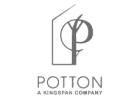We had some queries on proofing this week and as such I thought I’d clarify the different types of proof out there and the impact they have on cost or your job.
 So when your file enters a print workflow the file is passed through whats called the RIP (Raster Image Processor) this converts your file and makes sure everything is readable by the machines. Before the plates are created but after the file processing the file is sent for proof – in most cases this is usually via:
So when your file enters a print workflow the file is passed through whats called the RIP (Raster Image Processor) this converts your file and makes sure everything is readable by the machines. Before the plates are created but after the file processing the file is sent for proof – in most cases this is usually via:
PDF Proof – A PDF proof is simply a PDF that has passed through the RIP used mostly for content checking (so that nothing has been interpreted incorrectly or dropped off during the process). This is then sent back to you to check. Timescales on your job are almost instant – as you can approve a PDF via email in minutes.
In some cases different proofs are required and some of these are below:
Hard Copy Digital Proof – taken usually from a calibrated printer – this will print pages or imposition of the RIP file. Again mostly used for content & to some degree colour, but because it’s not the actual press, colour can sometimes shift a small amount. Obviously regarding timing, a hard copy proof either has to be posted or dropped in for approval and this adds at least a couple of days to your production schedule.
Low Resolution layout – used for imposition checking or folding checks post press. Not many end customers get to see these as they are used mostly in house to make sure everything is ok.
Chromalin – colour accurate proofs that have the advantage of being able to replicate PMS colours.
Wet Proof – the printing press is set up, exactly as it would to print the job, except it is simply set to run an actual print of your item. This shows you exactly what the end result will be – obviously if your job is being run on a litho press, the cost involved in this option is huge in comparison to the PDF proof, but needed if you’re running a colour specific book. If, on the other hand, your job is being run on a digital press – this is a simple as running a proof, the digital press doesn’t use plates and a single print can be run off. A wet proof needs to be run within a production schedule so can sometimes be over a week until a wet proof is printed and reaches you for approval.
After approval of your print proof, & if litho printing, the RIP file is then used to create the separate plates used in the printing process (I won’t go into all the detail used in the RIP). These plates (1 for each colour used in the printing process) are then loaded into the printing press and the press is then brought up to colour weight and your job is run.
I hope this has helped understand both the terminology and why some proofs are used. If you need any help or advice – you’re always welcome to contact us on 0844 272 9109.































































